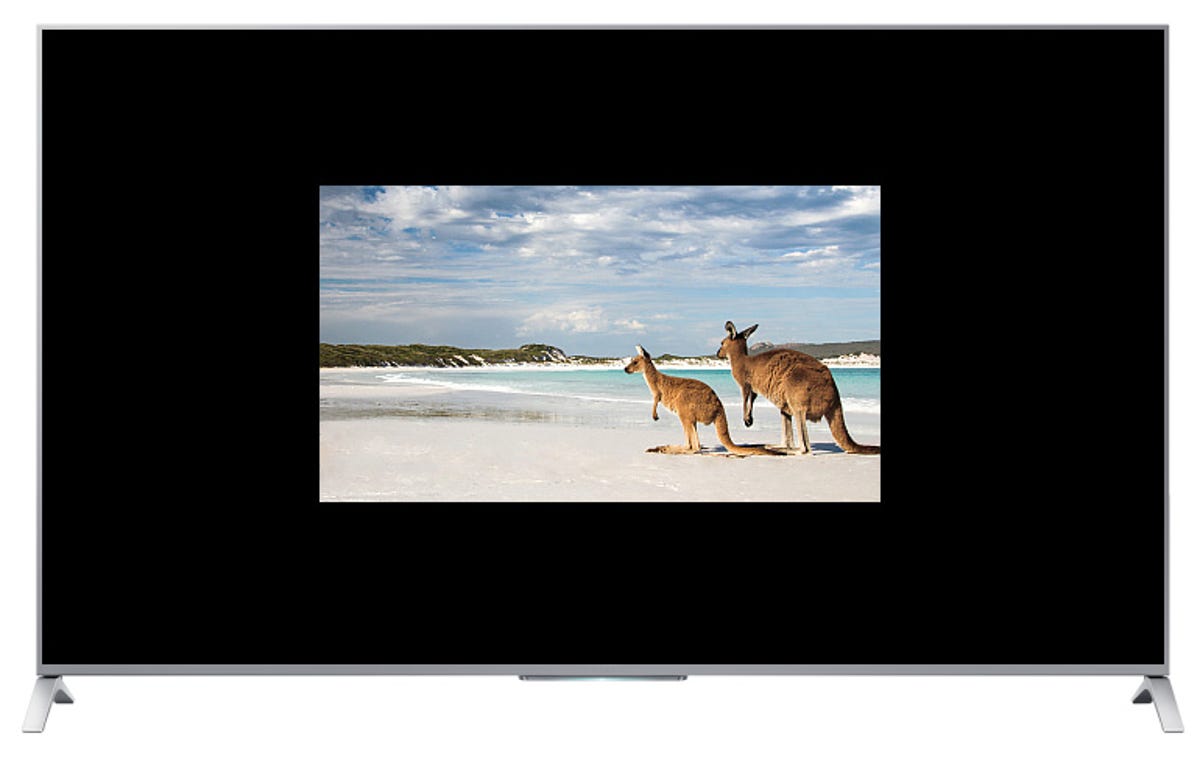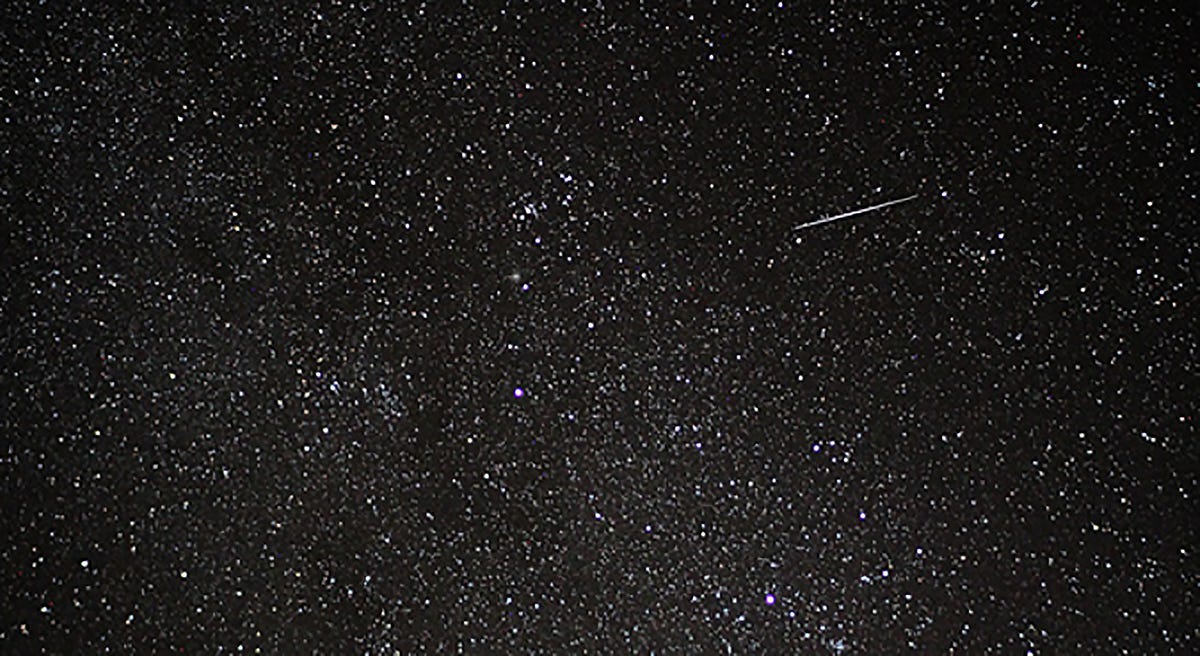If you listen to the marketing from TV manufacturers, it seems TVs with 4K resolution will deliver a massive boost in picture quality.
And, if you’re lucky enough to actually have a source of real 4K video — one with the same 3,840×2,160-pixel resolution as 4K TVs — you may well be able to see additional detail. (4K TVs — also known as Ultra HD sets — are so named because that 3,840-pixel horizontal resolution is almost 4,000 pixels wide. 4K TV is less of a mouthful than 3.84K TV.)
But real 4K video sources are still few and between, which means most of us will be watching content in good, old-fashioned “regular” high-def: 1,920×1,080 (1080i or 1080p) or 1,280×720 (720p), both of which have far fewer pixels than 4K.
Since that’ll be the case for many years to come, how much would a 4K TV actually improve the picture?
The short answer is that a 4K TV could improve the picture a bit in the best cases — but don’t expect miracles. Most 4K TVs use a process called upconverting (or upscaling) to convert incoming sources to fit their 4K screens. Done right, it can add to the perceived detail of the image, but you’ll have to look pretty hard, and sit pretty close, to see the difference.
What follows is the longer answer why. We’ve covered this issue before when talking about converting standard-definition to high-definition, but with 4K TVs becoming more prevalent, it’s time for an update.
Upconverting, upscaling and scaling explained
Here’s the problem. Your 4K TV has a resolution of 3,840×2,160 pixels. Pretty much all cable, satellite, streaming, gaming, Blu-ray and other video content is 1,920×1,080 pixels (which is called 1080p and 1080i) or 1,280×720 (called 720p).
If you were to watch 1080p content on your 2160p TV without upconverting, it would look like this:


Geoffrey Morrison
All 4K resolution TVs have four times as many pixels as 1080p TVs. Put another way, they have four times as much screen real-estate to fill.
The math and logic behind how an image is scaled (and scaled well) is way beyond the scope of this article. The basics are this: detail refers to how sharp the edges are. The finer the edges, the more apparent detail, for the most part. A scaler figures out what’s an edge, and then makes some assumptions as to how to make that edge finer.
It’s not magic
The thing is, this isn’t magic — nor is it perfect. Unlike TV shows and movies that can “zoom in” to read a fingerprint on security camera footage from 20 yards away, real-world scaling can do a little but can’t work miracles.
Here’s an example I made to demonstrate the subtle differences in detail when scaling images.
First is a 1,920×1,080-pixel portion of a photo I took. The second image is that same one, sized down to 540×304, then enlarged as to fill a 1,920×1,080 screen. I’m using these resolutions instead of 1080p/4K because the process is the same, this is easier to see, and 4K images would be larger than most computer screens.

 Enlarge Image
Enlarge ImageGeoffrey Morrison
Above, the original image. Below, shrunk to 540×304, then blown up to 1080p with minimal/poor scaling.

 Enlarge Image
Enlarge ImageGeoffrey Morrison
Not a subtle difference, right? Yes, this is an extreme example, a slight exaggeration so you’re able to more easily see what’s going on, but the general process of what’s going on in your TV is the same.
Here’s one more. This is that same blown-up 540×304 image, but this time scaled up with Photoshop, with a bit of detail enhancement.

 Enlarge Image
Enlarge ImageGeoffrey Morrison
A lot better, right? Still not perfect, but it definitely looks sharper.
So can good scaling make a 1080p image look good on a 4K TV? Compared to that same content badly upconverted, yes. In CNET’s reviews of the better 4K TVs, we’ve found that 1080p Blu-ray upconverted to the 4K screens looks great, although not appreciably better than 1080p on a 1080p TV.
It’s also worth noting just because content is in 4K resolution, that does not necessarily mean it’s “good.” I’ve seen some convincing demos where pristine upconverted 1080p content was shown on a 4K TV, side-by-side with the true 4K version of the same content on a second identical 4K TV. It was hard to tell the difference, even up close.
But that wasn’t a real-world demo. In the real world, most content isn’t pristine. In the real world, streaming 4K content from Netflix or Amazon can look worse than 1080p Blu-ray. CNET’s hands-on comparisons of 4K streaming (and 4K from a Samsung UHD content pack and from Sony’s 4K video player ) versus Blu-ray showed very little difference for the most part, and at times the Blu-ray looked better.
That said, the best 1080p content is never going to look as good the best 4K content. It’s just not possible.
Lower-than high-def sources
Upconversion is more difficult with lower resolution sources. Standard-definition TV, DVD and even 720p HDTV programs aren’t going to look any better on a 4K TV. You can’t get water from a stone.
And it’s worth remembering that the more you sharpen an image, the more you accentuate the flaws present in lower-grade content, such as noise or macroblocking.
So will a 4K TV displaying lower resolution sources look worse than on a 1080p TV?
That depends on the TV. Will this older, lower-resolution content still be watchable on a 4K TV? Generally, yes. Some videophiles may balk, but for the most part the image will be soft, but not bad. But again, it can depend on the TV. Which brings us to…
Almost every TV
Just because a TV is 4K doesn’t mean it has a good scaler built-in. On cheaper 4K TVs, for instance, you probably save money because of a sub-par scaler. So in these cases, 1080p content probably won’t look any better (and possibly worse).
Sadly, as far as scaling performance is concerned, you usually get what you pay for.
Bottom line
Like any marketing, take the claims from TV manufacturers with a grain of salt. Good upconversion can improve the apparent detail in an image; I’ve seen side-by-side demos that make 1080p look nearly as sharp as 4K. Admittedly these were put on by a company which makes scalers, but the potential is there, just as it was in going from standard to high definition.
To get the most out of your 4K TV, you need good 4K content. There isn’t a lot now, but there will be more soon. In the meantime, a TV with a good scaler can make 1080p look slightly more detailed, than it would on a similarly-performing 1080p TV. Presuming, of course, you’re sitting close enough.
Got a question for Geoff? First, check out all the other articles he’s written on topics such as why all HDMI cables are the same, LED LCD vs. OLED vs. Plasma, why 4K TVs aren’t worth it and more. Still have a question? Send him an email! He won’t tell you what TV to buy, but he might use your letter in a future article. You can also send him a message on Twitter @TechWriterGeoff or Google+.




